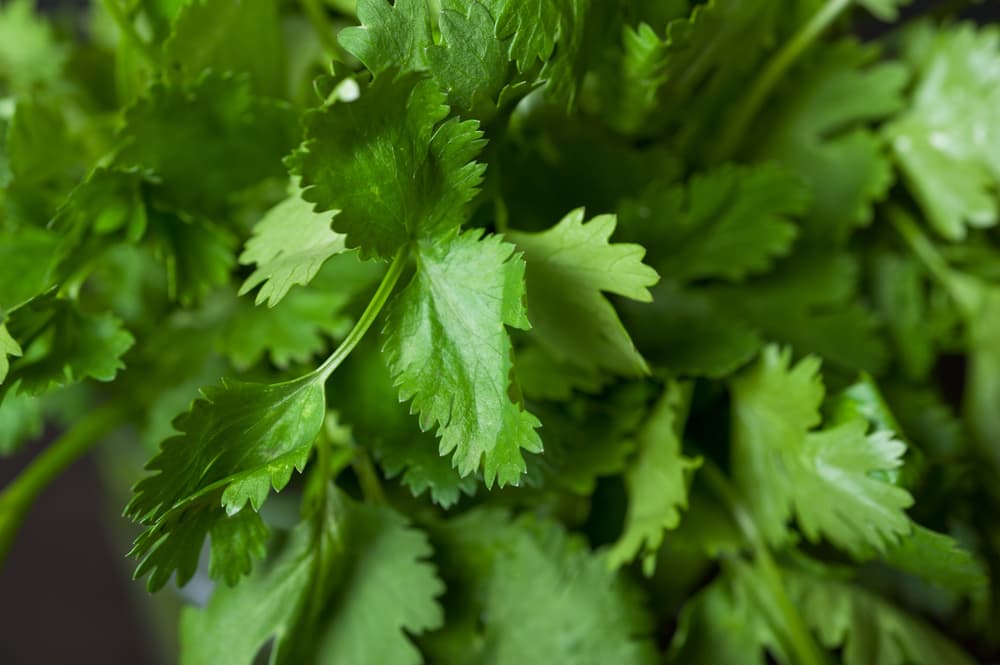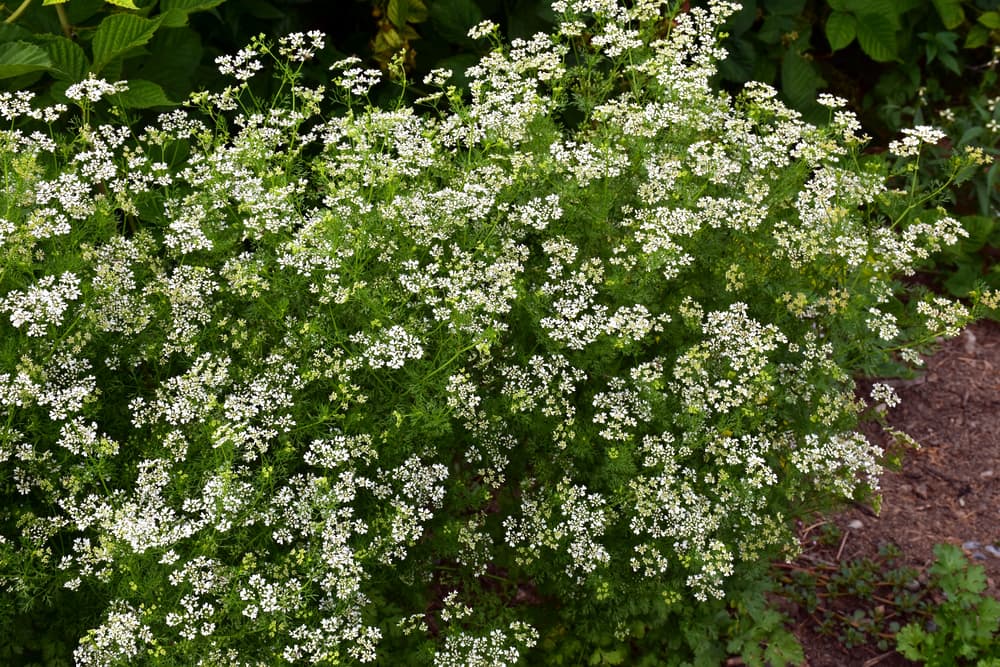The Smart Way To Grow Coriander For A Regular Supply Of Leaves Through The Year

HERBS > CORIANDER
Chris is a gardening writer and nature enthusiast. He graduated from Oxford Brookes University in 2022 with an MA in Psychology. Chris works with the Leeds Green Action Society, helping their food cooperative by growing various fruit and vegetables on their two allotments in Hyde Park, Leeds.
Reviewed By PETER LICKORISH

Peter is a Horticulture Lecturer and self-employed Horticulturist, with a passion for diverse areas of the industry - from garden design to the science behind plant growth and propagation. He has completed the Royal Horticultural Society’s Master of Horticulture (MHort) Award and lectures on RHS courses at Bedford College.
CORIANDER GUIDES
Thanks to its distinctive flavour and incredible versatility, coriander herb has made its way into cuisines around the world.
Not only will you find it alongside other spices in all manner of curries, but in dishes as varied as chilli, scallops, salads, pasta, and more.
Whether as a garnish or an integral ingredient, coriander contributes an enormous amount to any dish it’s used in.
Overview
| Botanical Name | Coriandrum sativum |
| Common Name(s) | Coriander, Cilantro |
| Plant Type | Herb |
| Native Area | Europe |
| Hardiness Rating | H2 |
| Foliage | Deciduous |
| Flowers | White or purplish flowers |
| When To Sow | June, July, August, September |
| Harvesting Months | July, August, September, October, November, December |
Sunlight
Preferred
Full Sun or Partial Shade
Exposure
Exposed or Sheltered
Size
Height
0.1 – 0.5M
Spread
0.1 – 0.5M
Bloom Time
July – August
Soil
Preferred
Chalk, loam, sand
Moisture
Moist but well drained
pH
Any
Coriander is a fragrant herb hailing from many areas of Southern Europe and Western Asia.
Coriander vs Cilantro – What’s The Difference?
Like many things, Americans have muddied the water around coriander a little.
Across the Atlantic, they refer to the leaves and stalks of the coriander plant as ‘cilantro’ – they still call the seeds ‘coriander’, however.
In an interconnected world, this can sometimes lead to confusion.

Many curry recipes online, for example, call for cilantro – to the untrained chef, this instruction can lead to hours spent in the supermarket, trawling up and down the herb section to little avail.
Why Grow Coriander?
The main reason to grow coriander is for the fantastic flavour, and to save a whole bunch of money compared to buying a fresh sprig of the herb every time you need to use it.
If you want to grow coriander but don’t want to cheat by using one of the pre-potted plants you can buy in supermarkets, then read on.
How To Grow Coriander
Growing coriander is simple – all you need to do is find a spot in your garden that gets full sun or partial shade, prepare the soil for planting, and sprinkle a thin layer of seeds.
Once planted, your coriander seeds will germinate after 1-3 weeks.
Then it’s just a case of waiting for them to grow!
To ensure a regular supply of leaves throughout the year, plant staggered batches.

You can sow coriander from June through to September, and you can protect plants growing in cooler months by covering them with polythene or another transparent, insulating surface.
Coriander also lends itself perfectly to growing in window boxes or planters, so if you’re working with a balcony, or even a windowsill, rather than a garden, you’re still in luck.
Ongoing Coriander Care
Watering
With coriander, your goal is to keep things moist.
Too wet, and the plant will struggle to grow – too dry, and it risks flowering early.
If this happens, the harvest will be less impressive.
So, water sparingly, and stay vigilant to ensure that the soil never fully dries out.
Fertilising
Coriander will do just fine without being fertilised, but a little plant-balanced food won’t go amiss if it’s looking a little worse for wear, especially if it’s growing in a pot.
Read the instructions of your chosen feed to ensure you don’t apply too much.
Harvesting
For most of us, this is the only reason we grow coriander – to ensure a steady supply of the herb, ready to be used at a moment’s notice in all manner of delicious culinary exploits.
Picking coriander is easy.
Just wait until the plant is ripe, then snip or pick the desired stems.
“The versatility of coriander is seen in the harvesting options – regularly harvesting small quantities of leaves and taking no more than a third in one go, gives a continual harvest,” says Master Horticulturist Peter Lickorish.

“Also, the flowers can be eaten or the edible seeds can be left to form.”
Take them indoors and allow to dry on a piece of kitchen roll, then store in an airtight box until you need them.
You can freeze coriander, too, meaning it’ll last almost indefinitely.
Note that we wouldn’t recommend using frozen and defrosted coriander in recipes that call for it to be used fresh! It’ll end up very soggy.
Common Problems
Coriander is prone to a few issues, although nothing so severe that you shouldn’t be able to take care of it.
Here are some problems to look out for when growing coriander at home:
Slugs & Snails
These prolific nuisances see it as their birthright to crawl all over your precious plants, leaving a trail of slime and munched leaves in their wake.
With flowers and other decorative plants, the munch-holes are dispiriting to see.
But with edible crops like coriander, they bring that extra level of revulsion. Not many people will willingly eat a leaf that’s already been eaten by a slug or snail..!

The best trick to keep these pests away from your coriander is to grow it indoors.
If that’s not an option, you can use various techniques and substances to discourage slug and snail visitations.
Bolting
When a plant bolts, it flowers earlier than intended.
Bolting is typically encouraged by difficult growing conditions, causing the plant to perceive the need to propagate itself and increase its chance of survival in challenging situations.
While this sounds like good survival instinct, it’s not good for the flavour of coriander – in fact, after a plant has bolted, you shouldn’t eat it.
Even cutting the flowers off will not stop leaves becoming bitter.

To avoid bolting coriander, heed our advice from earlier on and ensure the soil doesn’t end up too dry!
It’s about maintaining that sweet spot between too dry and too wet.
Also, be vigilant and harvest your coriander when it’s ready. Waiting too long will increase the chances of the plant flowering.
We love coriander. It’s tasty, versatile, cheap, and easy to grow – what a fantastic combination!
Also, once you’ve got into the swing of staggering your coriander harvests, you’ll have a near-endless supply of the herb to work with.
